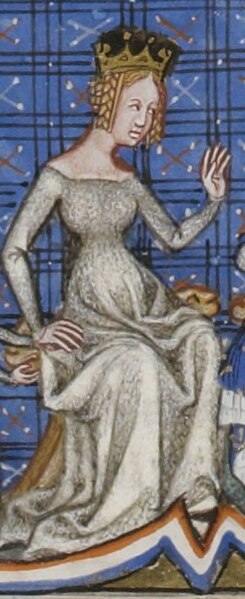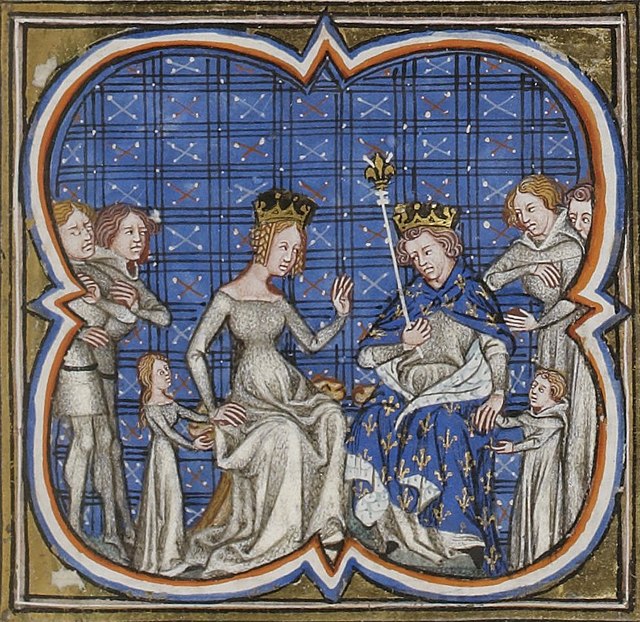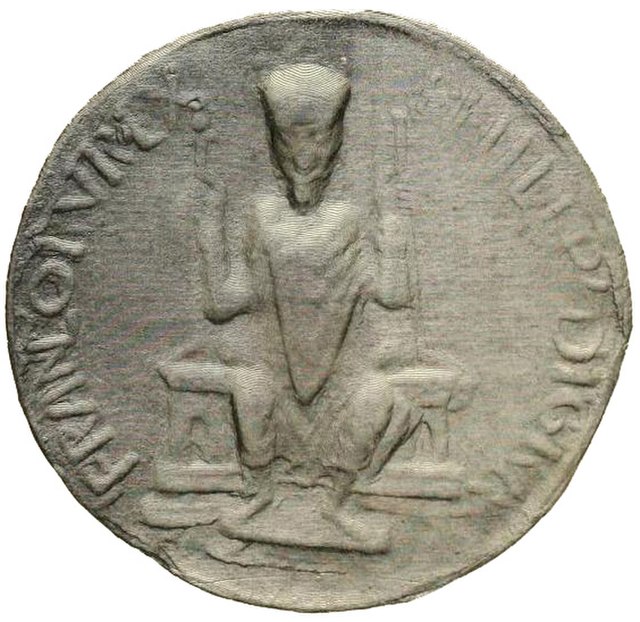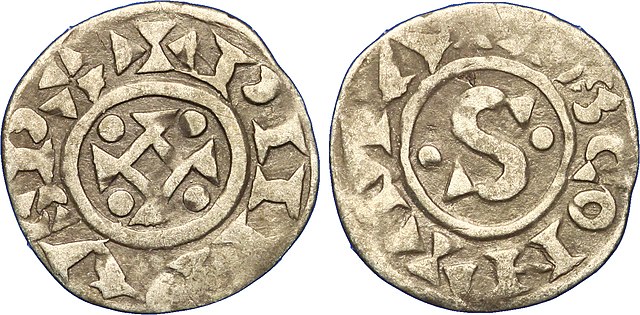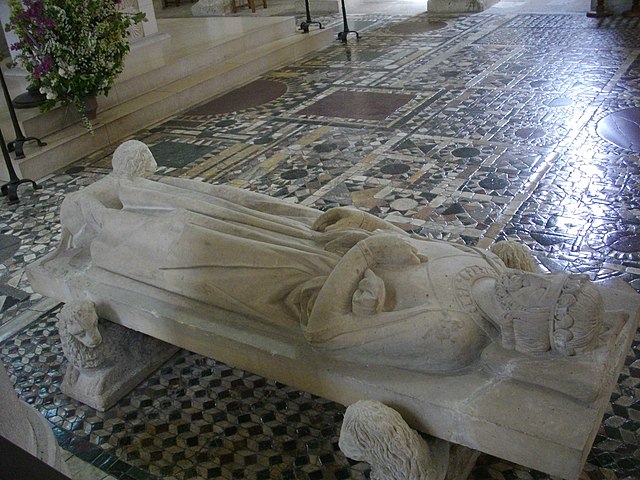Bertha of Holland, also known as Berthe or Bertha of Frisia and erroneously as Berta or Bertrada, was Queen of France from 1072 until 1092, as the first wife of King Philip I of France. Bertha's marriage to the king in 1072 was a result of peace negotiations between him and her stepfather, Count Robert I of Flanders. After nine years of childlessness, the royal couple had three children, including Philip's successor, Louis VI. Philip, however, grew tired of his wife by 1090, and repudiated her in 1092 in order to marry the already married Bertrade of Montfort. That marriage was a scandal since both Philip and Bertrade were already married to other people, at least until Queen Bertha died the next year.
Bertha of Holland
Bertha of Holland marrying King Philip I
Queen Bertha and King Philip with their children
King Philip marries Countess Bertrada, with Queen Bertha imprisoned in a castle
Philip I, called the Amorous, was King of the Franks from 1060 to 1108. His reign, like that of most of the early Capetians, was extraordinarily long for the time. The monarchy began a modest recovery from the low it had reached during the reign of his father, Henry I, and he added the Vexin region and the viscountcy of Bourges to his royal domaine.
Philip I's seal
Denier under Philip I
13th-century effigy of King Philip I
Posthumous painting by Gillot Saint-Evre, 1837

